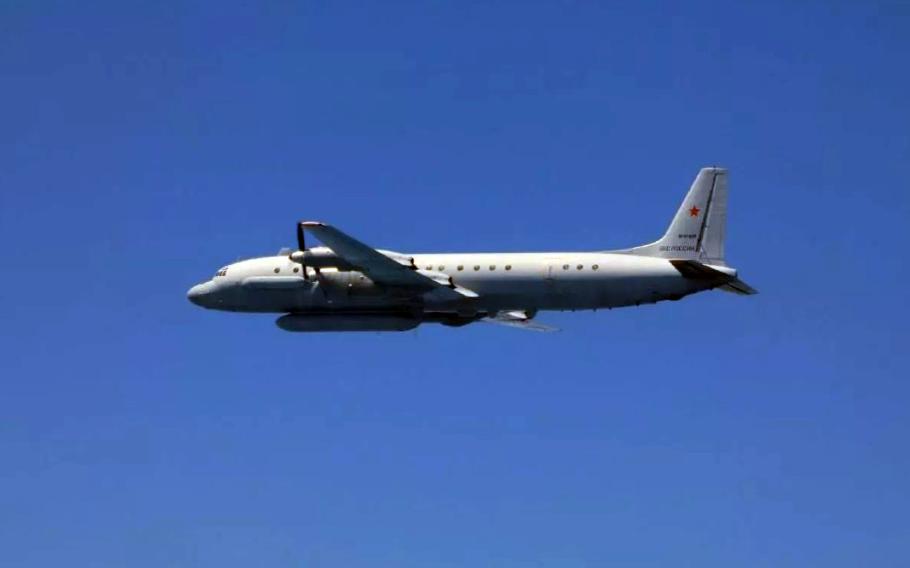
A Russian Ilyushin IL-20 flies over the Sea of Japan in this image released by the Japan Joint Staff on May 18, 2024. (Japan Joint Staff)
North American Aerospace Command intercepted another Russian surveillance flight Thursday in the Alaska Air Defense Identification Zone, the second such flight in the same region in two days.
An Ilyushin IL-20 Coot four-engine turboprop aircraft flew through the international zone without entering either Canadian or U.S. sovereign airspace, according to a NORAD news release Thursday.
NORAD dispatched an E-3 Sentry early warning and control aircraft, a KC-135 aerial refueler and two F-16 Fighting Falcons to intercept, track and monitor the IL-20, the release said.
An IL-20 made a similar flight Wednesday and was tracked by NORAD in the defense zone for an hour and 12 minutes, said Canadian Armed Forces Capt. Rebecca Garand, a NORAD spokeswoman.
NORAD provided no further details about Thursday’s flight and did not immediately respond to an email seeking more information that evening.
Russian military flights through the Alaska Air Defense Identification Zone occur regularly and these two posed no threat to U.S. security, according to NORAD.
The IL-20 is electronic intelligence gatherer capable of 410 mph, according to combataircraft.com
The Russian aircraft flight Wednesday took the plane approximately 30 miles from St. Lawrence Island, Garand said in an email Thursday. The Bering Sea island is a U.S. territory 140 miles from Alaska and 46 miles from Russia.
In that case, NORAD sortied two F-16s and one KC-135 to identify and monitor the Russian aircraft.
On Tuesday, the Japan Air Self-Defense Force scrambled fighters to intercept two Russian Tu-95 Bear bombers and two fighters over the Sea of Japan, according to the Japan Joint Staff.
The Russians flew from the mainland, then turned northeast to skirt Japanese territorial airspace off the coast of Sado Island, Niigata prefecture, a news release said. The Russians’ flight lasted from morning to afternoon.
“We will continue to monitor Russian military movements in the airspace surrounding Japan with great interest and will take all possible measures to ensure vigilance and surveillance,” a Joint Staff spokesman said by phone Thursday.
Some Japanese government officials speak to the press only on condition of anonymity.
An air defense identification zone, or ADIZ, begins where sovereign airspace ends 12 nautical miles from the coastline.
While not universally recognized, the zone serves as a buffer area where aircraft are expected to identify themselves for national security purposes.
Russian aircraft also flew through the Alaskan zone in July.
Two Russian Tu-95 Bear bombers and two Russian Su-35 Flanker fighters flew for three hours through the zone, which covers millions of square miles, including large portions of the Arctic Ocean, the Bering Sea and the northern Pacific.
In April, two Tu-95 bombers, one Tu-142 F/J reconnaissance and anti-submarine plane, one A-50 Mainstay early warning plane, and two Su-35 Flanker fighters flew through the identification zone for about 2 ½ hours over the Bering Sea.
On Sept. 23, a Russian Su-35 fighter made a close pass of an American interceptor, which drew a rebuke as unsafe and unprofessional from the head of NORAD at the time.